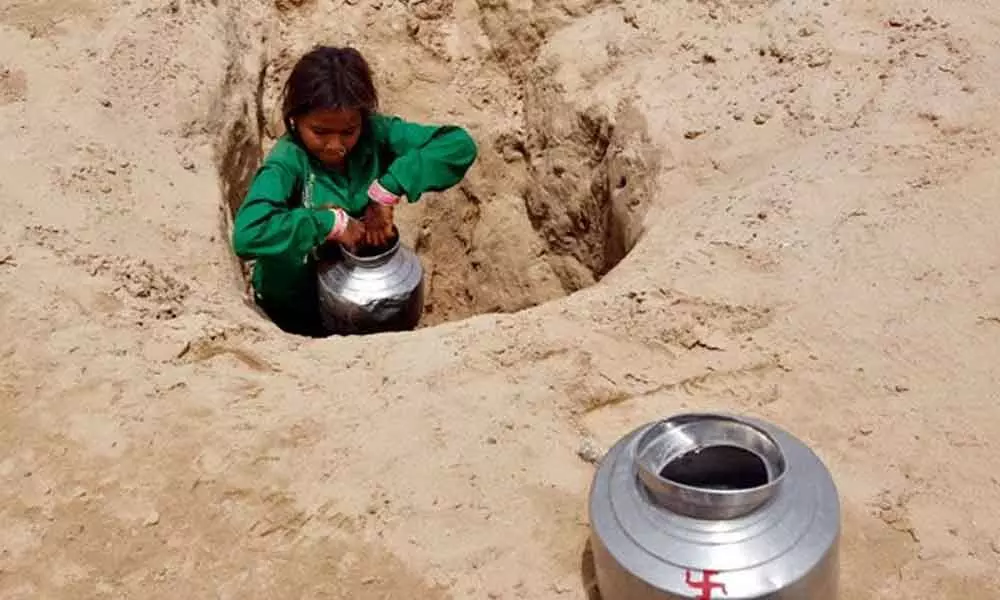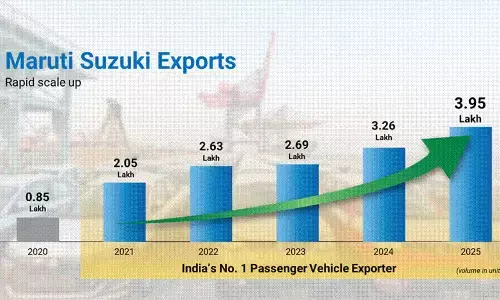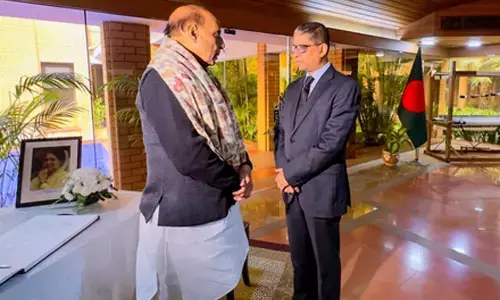Water use efficiency is vital for India's progress

Water use efficiency is vital for India’s progress
Since times immemorial, water, and with it, the rain that brings it to us, have become an integral part of mankind’s day to day life.
Since times immemorial, water, and with it, the rain that brings it to us, have become an integral part of mankind's day to day life. When one looks around the world, strange phenomena can be observed. There are places, such as the Death Valley in California, where not a drop of water can be seen in any direction up to the horizon, and other places, such as Venice, where nothing but water is to be seen wherever you look!
In Quibdo in Columbia it is rare to find a day on which it is not raining, while, on the other hand, we have Arica in Chile where rain is practically unheard of! We also have the example of Jordan, where growing water scarcity has driven the government to develop a water demand management strategy to maximise water use efficiency and minimise wastage.
The strategy includes measures to increase irrigation efficiency, broaden the use of treated wastewater in the agricultural sector.
On similar lines, in Australia, state and territory governments have worked together through the Urban Water Reform Committee to identify the next stages of urban water reform. The National Water Initiative is Australia's blueprint for water reform and represents a shared commitment by governments to increase the efficiency of Australia's water use, leading to greater certainty for investment and productivity, for rural and urban communities, and for the environment.
There are countries, such as Israel, (which this columnist had the privilege of visiting), where practically every drop of water has been put to the most productive use. Water drawn from a national grid is sold by volume to the communities known as Kibbutzim and Moshavs, and agricultural and horticultural products are received by them to the government in return, in accordance with prescribed parameters relating to quantity and quality.
Water and rain have a significant role in promoting the process of growth and development of India's economy. In the first place, agriculture, the mainstay of India's economy, is substantially dependent on the rain that the monsoons bring. The monsoons used to be regular, until the rhythm was upset, in recent decades, by the onset of phenomena such as global warming, climate, change, and atmospheric pollution. As a result, year after year, one sees parts of the country suffering from severe droughts, while some others are ravaged by floods, which take a heavy toll of life and property.
The National Water Mission (NWM) in India has also been organising a seminar series - 'Water Talk' -to promote dialogue and information sharing among participants on a variety of water-related topics. It is intended to create awareness, build capacities of stakeholders and encourage people to become active participants in the conservation and optimal use of water. So far 25 such talks have been organised on a range of topics.
The Ministry of Water Resources (MoWR) of the government of India, has many components in its vision, they include accurate assessment of optimal and sustainable development of water resources, and ensuring adequate and quality water for all users to match growing demand. Other objectives of the Ministry are development and implementation of policies, programmes and practices, which are expected to enable efficient and effective use of water resources in an equitable and sustainable manner, with the active involvement of all stakeholders. Putting in place systems and practices, will promote sustained increase in water use efficiency, is also an important goal.
The 'Catch the Rain' campaign of the 'National Water Mission', a programme anchored in the MoWR was launched by Prime Minister Modi on the March 22, the World Water Day. It carries the tag line 'catch on the rain, where it falls, when it falls' and is aimed at nudging the states, and other stakeholders, to create Rain Water Harvesting Structures (RWHs).
Organised in a mission mode, people's active participation in the effort of storing capturing and rainwater is one of its primary objectives.
In other words, the campaign is aimed at converting the 'Jal andolan', into a 'Jan andolan'.
The campaign also promotes activities such as digging of water harvesting pits, constructing of rooftop RWHS, check dams, removal of encroachments, de-silting of tanks, restoration of wet lands and, rejuvenation of rivers and rivulets etc. The idea is to meet the water demand till the next rainy season. Replenishing ground water, improving the water table and soil moisture are also incidental benefits of the programme.
The central government has already asked the state governments and stakeholders to build RWHSs, to trap rainwater from roof-top and open-grounds of all government, semi-government and corporate establishments. To this end, the Chief Secretaries have been requested to direct the district authorities to enumerate all water bodies, cross verify with revenue records and remove encroachments, if any.
The District Collectors have been requested to start 'Jal-Shakti Kendras' at the district level to provide technical guidance in constructing RWHSs, and set-up toll-free numbers to assist their efforts. Reducing flooding is another objective of the campaign, particularly urban-flooding, covering all rural blocks and urban areas of all districts. All funds under the Mahatma Gandhi National Rural Employment Guarantee Scheme (MNREGS) will also be used for the related works.
In accordance with the National Policy, Andhra Pradesh state has already enacted the 'Water, Land and Trees Act (APWALTA-2002)' to promote water conservation and tree cover, protect and conserve water sources, and regulate matters connected therewith and the exploitation and use of ground and surface water.
The centrality of water as a resource, in the process of the growth and development of the country's economy, will naturally depend on the priority government of the day accords to the sector. Studies conducted some time ago showed for instance, that the current levels of subsidies for the food and fertiliser sectors were withdrawn for a period of five years, and diverted to the water resources sector, the funds made available would be adequate to complete all the incomplete major and minor irrigation projects in the country. This is not to suggest that this is actually to be done that way. It is only by way of pointing out that subsidies are necessary but should be transparent, back ended and targeted. And what is saved can be put to more productive purposes.
Measures of conservation of water are increasingly being built into the technology regime of buildings, in urban areas in particular. Growing kitchen gardens with decorative plants inside homes, particularly in multistoried apartments, are rapidly catching up, not only as a measure of water conservation, but also as part of the effort to promote 'green' cities.
(The writer is former Chief Secretary, Government of Andhra Pradesh)














